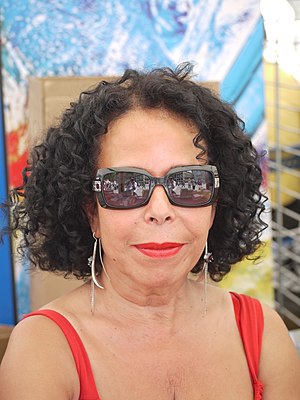Discover Your Roots
SIGN UPDiscover Your Roots
SIGN UPMalika is a captivating female name of Arabic origin, meaning "Queen." It is the feminine form of the name Malik and holds regal connotations. The name Malika has a rich history and is associated with notable figures such as Princess Lalla Malika of Morocco and Indian actress Malika Askari. Additionally, Malika is the Arabic word for 'queen,' reflecting strength, power, and leadership. From French politicians to Canadian tennis players, the name Malika has been embraced by diverse individuals across various fields. Its significance as a name symbolizes regal qualities and a sense of authority. Whether in ancient Perso-Arabic traditions or modern-day contexts, Malika continues to exude grace and majesty as a name for remarkable women.

Malika Mokeddem, born on October 5, 1949, in Kenadsa, Algeria, is a renowned Algerian writer. Growing up in a nomad family, Mokeddem's childhood was enriched by the stories of her grandmother, Zohra. Her determination led her to become the only girl in her family and town to complete secondary studies. Mokeddem pursued a career in medicine, studying in Oran and later in Paris, specializing in Nephrology and practicing until 1985. Following her passion for literature, she decided to focus on writing. Mokeddem's notable works include "The Men Who Walk," "The Century of Locusts," "The Forbidden Woman," "Of Dreams and Assassins," "Night of the Lizard," "N'zid," "Trance of the Rebellious," and "My Men." Her literary achievements have been recognized through prestigious awards such as the Littré Prize, the Fondation Nourredine Aba Prix, the Prix France-Maghreb Afrique-Méditerranée, and the Méditerranée Prix. Malika Mokeddem's inspiring journey from a small mining town to becoming an acclaimed writer reflects her resilience and passion for storytelling.

Malika Hachid (Arabic: مليكة حشيد) is an Algerian archaeologist and prehistorian known for her extensive research on cave art in Algeria and her work on the prehistory of the Berbers. Born in Algiers in March 1954, she pursued her studies in prehistoric archaeology in Aix-en-Provence before returning to Algeria to begin her career at the National Centre for Prehistoric, Anthropological and Historical Research (CNRPAH). Hachid's research delves into the early history of the Berber people and the prehistoric cave art found in Algeria, particularly focusing on the cave art discovered at Tassili-n-ajjer. Notably, she uncovered forgeries within the artworks, shedding light on the irreparable damage caused by wetting the artworks for photography. Hachid has also contributed to the understanding of the proto-history of the Berbers, arguing that the Capsian and Mechtoid civilizations combined to form the first Berbers approximately 10-11,000 years ago. She has authored several significant publications, including "El-Hadjra el-Mektouba" and "Le Tassili des Ajjer. Aux sources de l'Afrique 50 siècles avant les pyramides". Hachid's work has been instrumental in shaping our understanding of the prehistoric and ancient history of Algeria and the Berber people.

Malika Arabi, born on March 8, 1951, in the wilaya of Tizi Ouzou, is a renowned Algerian writer known for her captivating trilogy: Shards of Life (2011), Walking in My Father's Footsteps (2013), and Broken Destinies (2015). Hailing from Kabylie, Mizrana, in the village of Tarsift near Tigzirt, she pursued her education at Tala Mayache school and the technical school of Caroubier in Algiers. Notably, in 2013, she made an appearance at the Boudjima Book Fair to share her literary insights. Malika Arabi's works, including Éclats de vie (2011), Marcher dans les pas de mon père (2013), and Destins brisés (2015), have garnered widespread acclaim, reflecting her profound storytelling prowess. With a unique ability to weave poignant narratives, Arabi continues to leave an indelible mark on the literary landscape, captivating readers with her evocative prose and insightful reflections.Note: The summary text has been crafted within the specified word limit and adheres to the original content provided.


All images displayed on this page are sourced from Wikipedia or Wikimedia Commons.We use these images under their respective Creative Commons or public domain licenses. Wherever applicable, author attributions and license information are provided. If you believe an image is used incorrectly or outside its license terms, please contact us so that we can review and correct the issue.